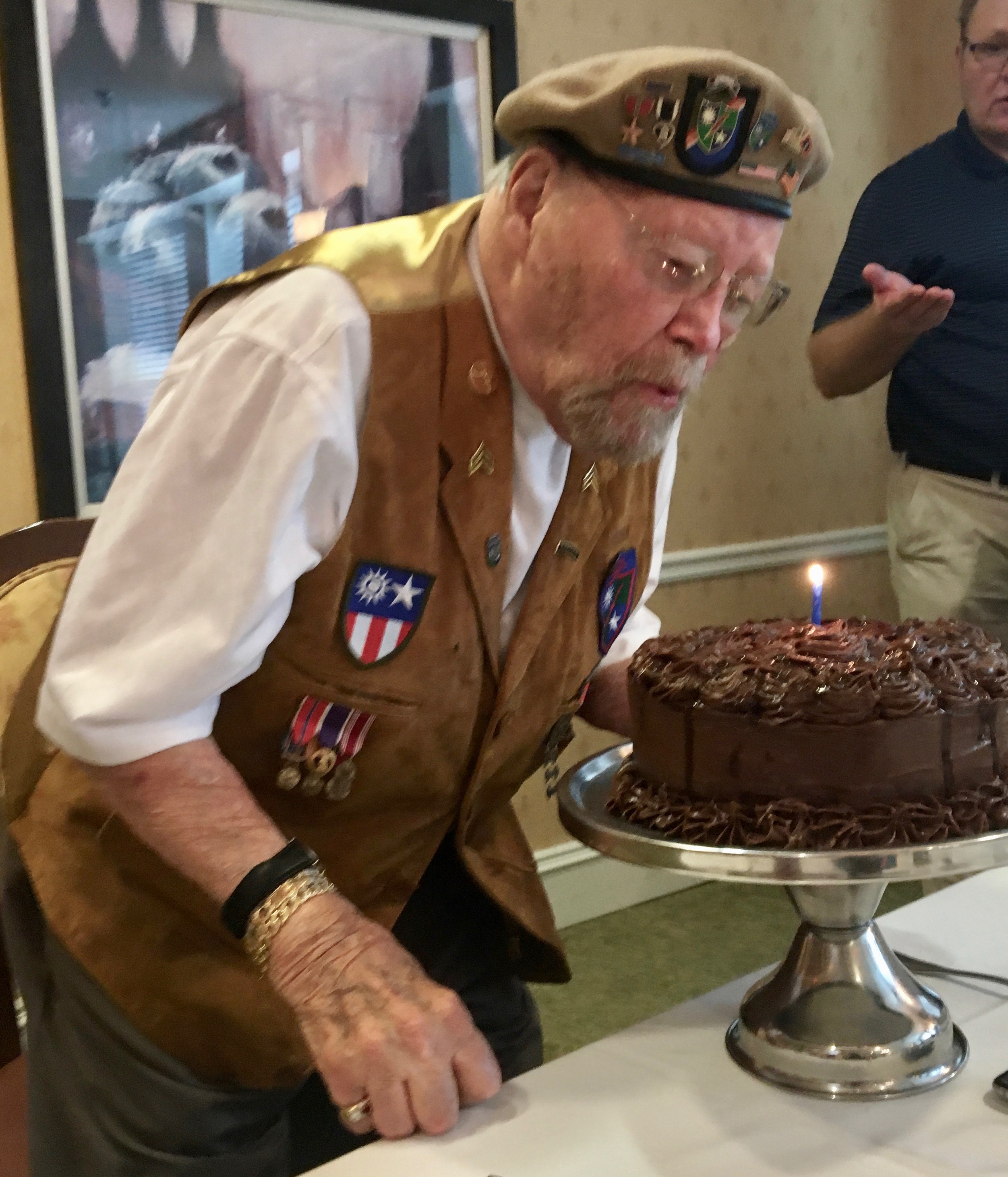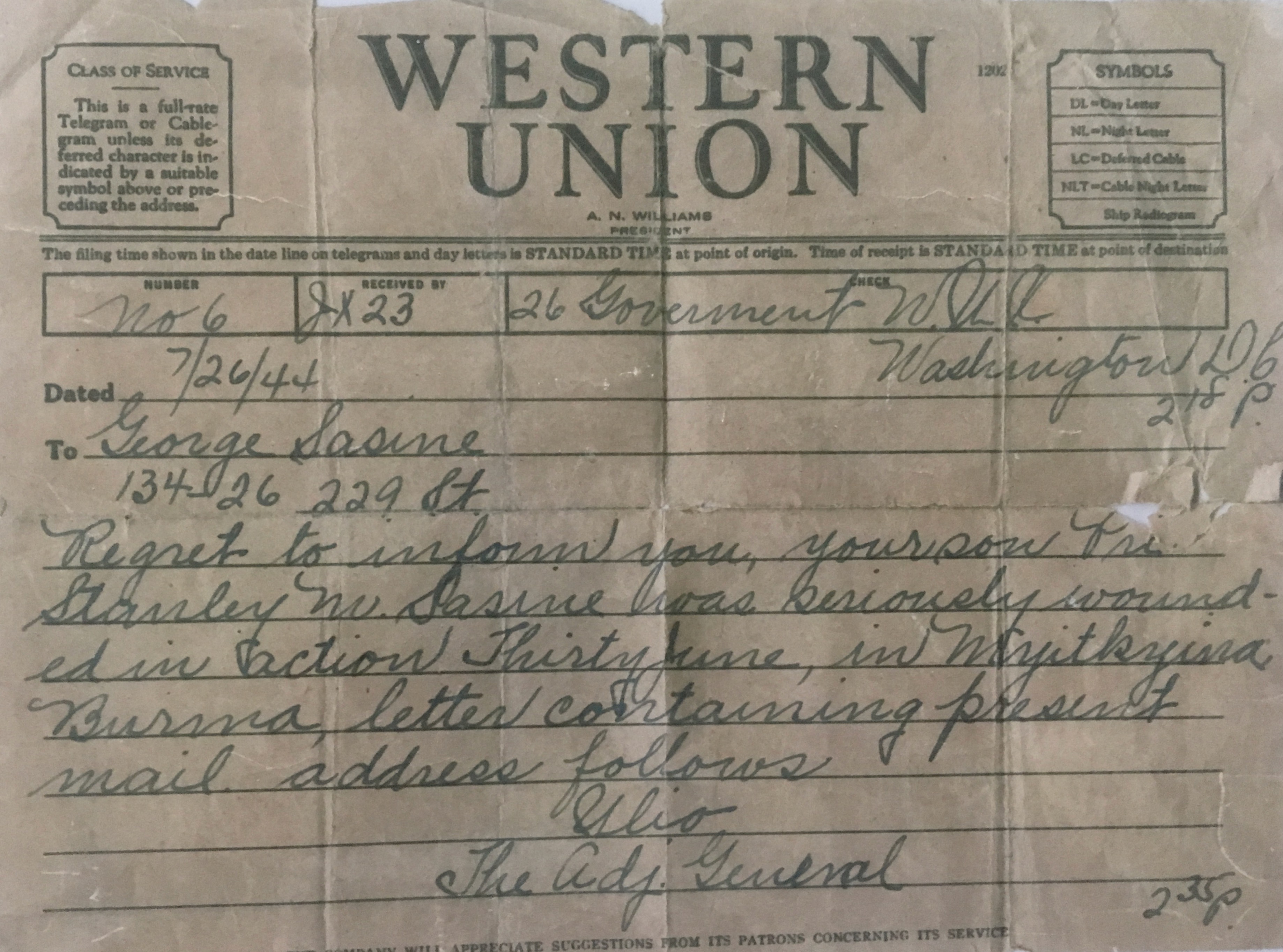At 95, Hero Recalls Legendary Campaign
As he celebrated his 95th birthday last week there was no mistaking Stanley Sassine for anything less than a veteran of one of the toughest units in the history of the U.S. Army.

As he celebrated his 95th birthday last week there was no mistaking Stanley Sassine for anything less than a distinguished veteran of one of the toughest units in the history of the U.S. Army.
There, on his wool beret, were miniatures of the Purple Heart and Bronze Star medals he had won, and on his vest were more military decorations, awards for expert marksmanship and the badge of the Army’s 5307 Composite Unit, the legendary Merrill’s Marauders.
When he blew out the single candle on a large birthday cake, he celebrated not only an important birthday but his good fortune as the only surviving Jew and one of the few surviving members of a unit whose combat record and brave sacrifice had few equals during the war.
It is exactly 75 years ago, July 26, 1944, that his parents received a telegram telling them that he had been wounded the previous month, but not before he had taken on a dangerous and thankless task as a Marauder.
“I was the point man for my unit. Because I suffered from color-blindness, they put me up front because I could clearly make out the Japanese snipers that were hiding camouflaged in the trees.”

For more than five months he fought with the Marauders behind Japanese lines in northern Burma, battling his way through 750 miles of some of the worst jungle terrain in the world. They harassed Japanese communication and supply lines, assaulted the rear units of the Japanese, and covered more jungle on their long-range patrols than any other U.S. Army unit in the war.
They were a new kind of guerilla army, patterned after the jungle fighting groups that the British had put together earlier in the war, and the forerunners of what would become the U.S. Army’s Ranger units.
They not only had to fight a war, but they had to battle exhaustion, malnutrition and epidemics of cerebral malaria and scrub typhus. Often they fought through bouts of bloody dysentery and fevers while sloshing through rivers of mud created by monsoon rains.
During the 1944 campaign, disease killed five times as many of the Marauders as bullets and grenades.
The Marauders field hospital staff at the time filed a report about their patients that read in part, “many were so tired, dirty and hungry that they looked more dead than alive.”
Brig. Gen. Frank Merrill, their commander, suffered two heart attacks during those months, but came back to lead his troops when he recovered.
They fought five major battles with the Japanese and engaged in formal combat a total of 32 times. Sassine was a deadly accurate shot.
“I must have picked off 250 Japanese in those trees. At first I would get them at 300 yards, but when I was that far away, I couldn’t hear them get hit, so I moved closer just to make sure I got them.”
Finally, during the campaign to take the important Myitkyina airfield in Northern Burma, Sassine literally came face-to-face with a Japanese sniper less than 50 yards away.
“We both saw each other at the same moment and fired at the same time. I was so close I could see my shot strike him between the eyes, but at the same time I felt this searing pain in my shoulder. His bullet had whistled by my chin and torn up my shoulder and shoulder blade.”

Sassine would spend the rest of the year recovering from his wounds, but it would be many more years before he would begin to have full use of the arm and be able to swing a golf club. He still has deep scars from the muscles that were separated by the sniper’s bullet.
Before he was evacuated, someone picked up the Japanese sniper’s rifle, with its chrysanthemum emblem of the Japanese emperor stamped into the metal, and tossed it as a souvenir on his stretcher. Seventy-five years later it’s a treasured possession in his Huntcliff Summit apartment in Sandy Springs.
Merrill’s Marauders were immortalized by Hollywood in a 1962 film that was a stirring and brutal study of combat. It starred the Jewish-American action star Jeff Chandler in his last role before he died.
Sassine came back to Long Island to marry after the war. He and wife, Renee, celebrated 70 years of marriage before she died two years ago. They had four children and 44 grandchildren and great-grandchildren.
On his birthday last week he was honored by the Georgia Military Veterans Hall of Fame for his “selfless service and stoic sacrifice during World War II … and his continuous service to mankind, thereafter.”



comments